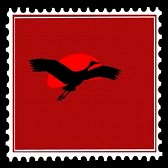Chi-Kung Massage and its Benefits for Sports
By Tai Chi Master Instructor Rosann Argenti, BSW
Traditional Chinese medicine is concerned with gathering and modulating a force known as “chi”, (pronounced “chee”). Chi is part of the same pool of energy, which runs the electrical impulses of the heart and the bio-electrical fields of the brain, and without which our entire physical system would collapse. The founders of Chinese medicine discovered this unseen and dynamic force nearly five thousand years ago. The workings of chi form an intrinsic part of the oldest medical system in the world, namely acupuncture.
Chi-Kung massage, fundamentally based on acupuncture theory, is a beneficial method to prevent and relieve tension in various areas of the body, which can be self-administered or given by another person. Chi-Kung massage requires no needles, just the hands. Universally, massage has always been one of the main methods of treating injuries. It can lessen pain, improve chi (vital energy) and blood circulation, and help to release mental strain, all of which can affect a rapid recovery.
Chi-Kung Massage is highly beneficial before and after sports for stimulating chi-flow and releasing lactic acid buildup. It can help to increase performance levels through promoting relaxation and increasing energy.
It is useful for people of all ages, including infants. Those who may feel the beneficial effects most powerfully are the elderly, who have sometimes lost the healthy habit of touching the body and maintaining its sensitivity.
Massage occupies a position of great importance in both Chinese medicine and Tai Chi/Chi-Kung exercise. Historically, many Chinese physicians were also experts in all categories of Chi-Kung massage. Martial artists had more experience with injuries than most people did, and it was necessary for them to know how to treat themselves and each other. Massage used to be a required course of study for all Chinese martial artists. For Buddhist and Taoist monks, Chi-Kung was a part of their training for attaining enlightenment, and massage became an integral component of meditation since the physical body was put through the demanding rigors of prolonged sitting-meditation.
Always begin each massage exercise by rubbing your hands together. Do this slowly at first, pressing the palms lightly together back and forth, and then quickening the pace of the rubbing action. This is done in order to obtain heat and stimulate the entry of chi into the hands. Focus on the middle of the palms and the fingertips. This approach develops the healing sensitivity of the hands.
When performing the massage, imagine that this vital energy is not merely brushing over the skin but penetrating it, and pushing further into the deepest layers of the body. When practicing these exercises, keep your mind focused on breathing gently, the movement of your hands, and the target body part.
The average time of the Chi-Kung Massage is approximately fifteen minutes. However, you can increase or decrease the number of repetitions on certain body parts according to your individual requirements. The more disabled a person is, or the more trouble a person has in moving, the more time that person should devote to massage. These massages will often help the body to become more agile and flexible. When practiced in the morning, the Chi-Kung massage invigorates your mind and body, although it may be performed at any time of the day or night as needed.


